Shouting Match
A usability study of an alt. controller video game prototype
January 2023 - January 2024
Shouting Match is an alternative controller 2D fighting game that uses shout commands as a core game mechanics. Our goal is to improve emotional self-regulation and reduce tilt and harmful conduct in fighting gaming communities. In this preliminary user study we evaluate the usability and intuitiveness of our current, low-fidelity prototype.
Contributions
Primary Role
Lead Developer, Associate Game Designer, UX Researcher
Responsibilities
- Game prototype development using C#, Unity, and Arduino
- Player recruitment and usability study combining playtest and focus group
- Thematic content analysis of the transcription data
- Results are published in the conference proceedings of CHI-PLAY ’23
Github repository
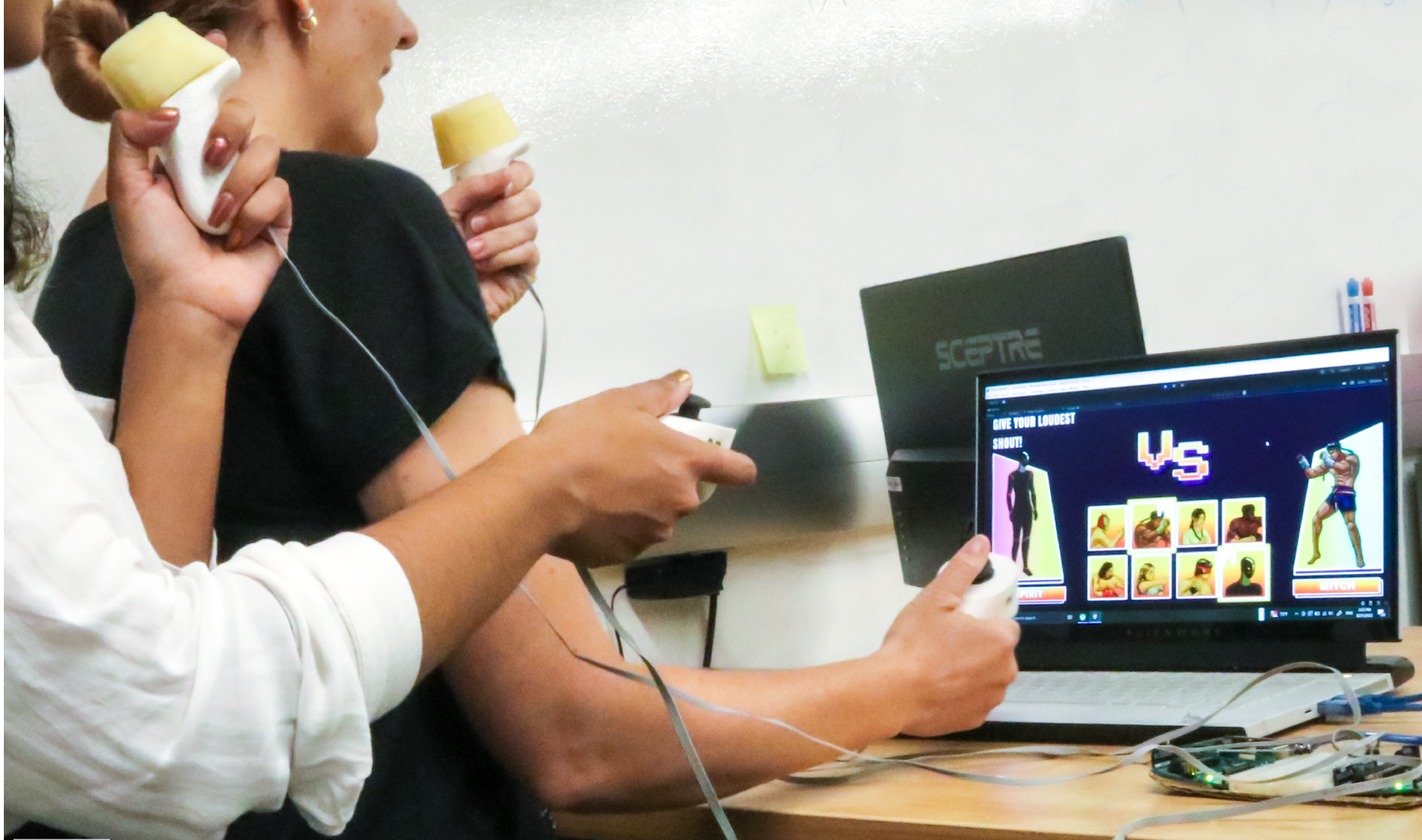
Published article
F. Ria Khan and Agnes Romhanyi. 2023. Controlling Your Voice in a Shouting Match: A Preliminary Study on Fostering Self-Moderation among Gamers through Embodied Play. In CHI PLAY Companion '23. ACM, New York, NY, USA, 29–35. https://doi.org/10.1145/3573382.3616072
Background & Motivation
Shouting Match was designed and developed as a 2D alternative controller fighting game that uses vocal shout commands as the core game mechanic.
We build on the traditionally expressive vocal culture of the fighting game community to allow players to practice self-regulation through their vocal expressions to explore opportunities of reducing toxic outbursts by fostering emotional self-regulation through embodied play.
Harmful behavior is prevalent in competitive game spaces and adversely affects the player experience and retainment. Many toxic encounters arise from stress, frustration, and the emotional upheaval of underperforming.
By design, Shouting Match pushes for reinterpreting vocal aggression into formulated play by using a player’s emotions to their advantage, or to strategize in expressing emotion and knowing when to hold back or lean into them. To control in-game character attacks, players must stay focused, tactical, and calm while using shout commands.
Collaborators
F. Ria Khan
Ph.D. student and graduate researcher at UCI
Concept development, Hardware design & engineering
System Design & Study Method
Alternative Controllers
Shouting Match uses two pairs of 3D printed bespoke controllers consisting of a single thumb joystick to move and block, and a microphone for vocally inputting attacks. Instead of separate buttons players use controlled shouts at low, medium and high volumes to initiate corresponding attacks.

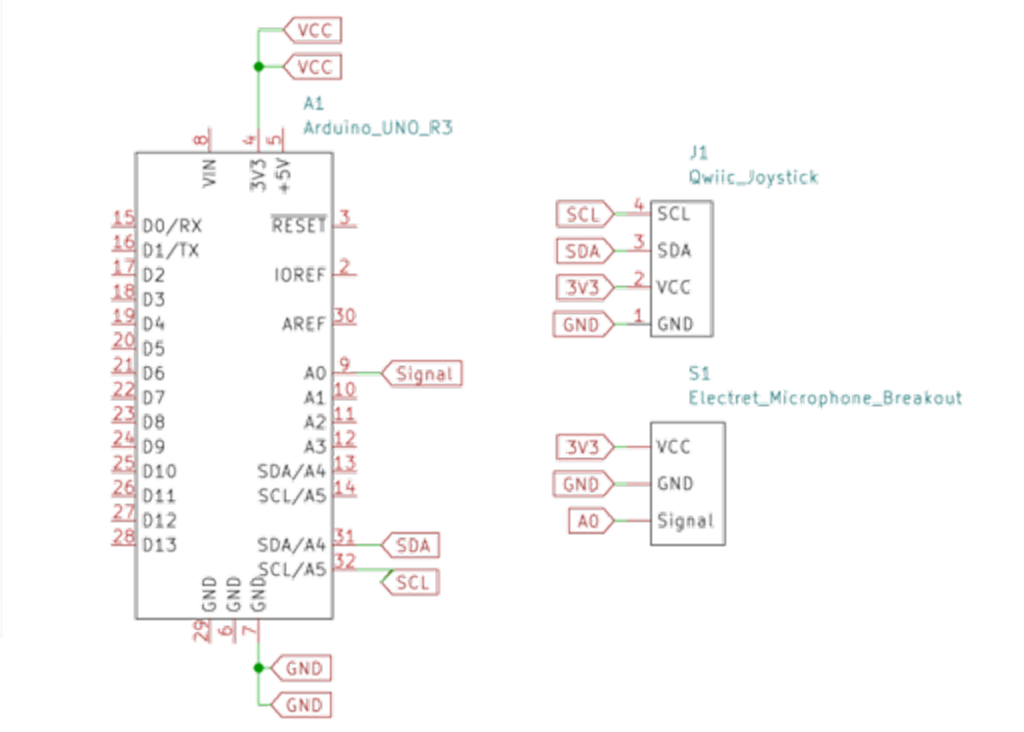
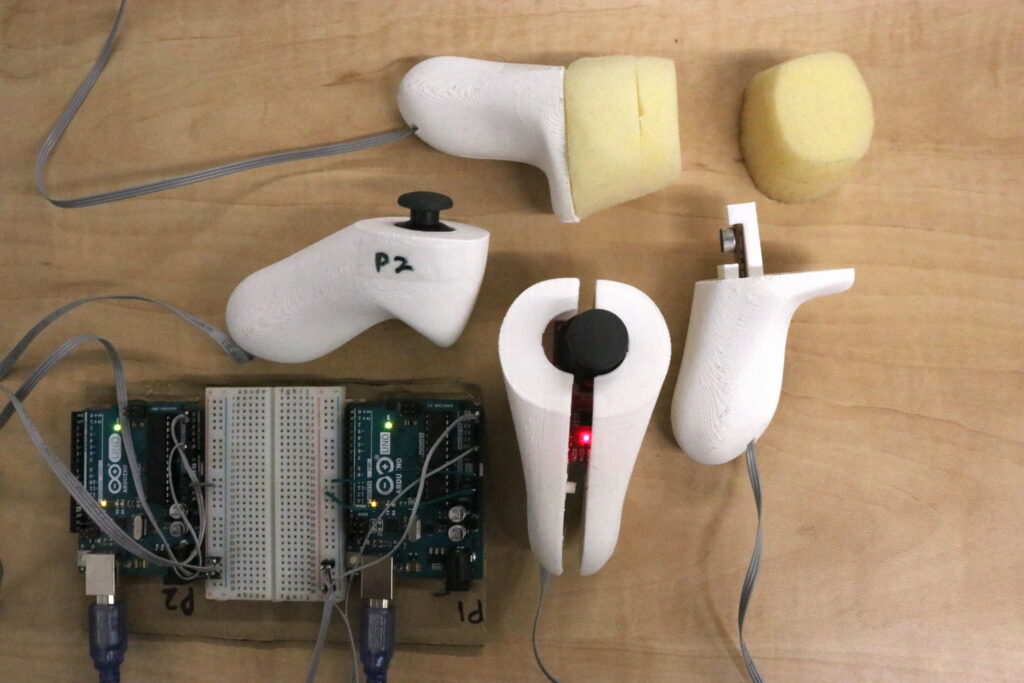
Focus Group & Playtest
We recruited eight participants from the Video Game Development Club at The University of California, Irvine, knowledgeable in both playing fighting games, the community, and general game design and development.
Participants were grouped into pairs and took turns playing two consecutive rounds of the game. During play testing, we observed how each pair interacted with the game, emotions they exhibited, and strategies they developed around the alternative controls. After the playtest, we conducted a focus group with guided conversations focusing on general usability, potential efficacy in addressing self-regulation practices, and future design opportunities.
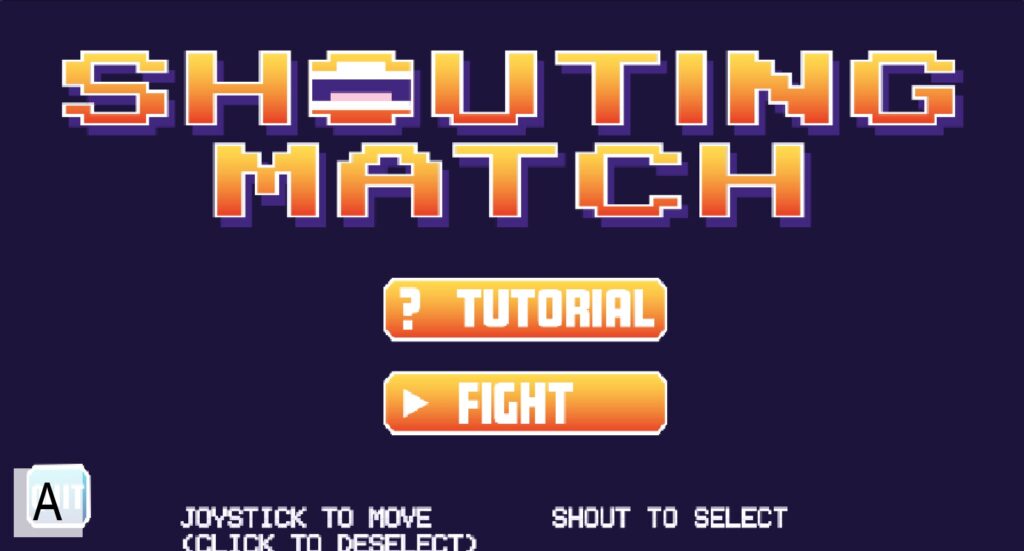


Analysis
The collected data was initially transcribed and corrected for accuracy and to de-identify participants. Iterative thematic analysis was used to qualitatively analyze the data. In multiple iterations the authors constructed, refined and arranged the emerging codes into central themes — resulting in 14 codes and three main areas of focus.
- General usability and practicality
- Player safety, accessibility, and inclusion
- Design suggestions and troubleshooting
Findings
- Difficulty of performing different attacks
Shout commands were shown to be less intuitive and predictable than traditional controllers. Players struggled to find thresholds between the different shouts to deliver calculated attacks. Additionally, Vocalized controls may create inequity in play. Voice control is less accessible for d/Deaf and hard-of-hearing communities and could be intimidating to introverted players. - Command words over shout volume
Players reported that allowing use of vocalized words and phrases would make the game more intuitive. It would make the gameplay more contextual and would prevent a situation where the game is being controlling by a player shouting slurs or using language deemed offensive. - Loudness can limit play
Often, location and time are not suitable for playing the game due to the volume involved that could disturb others. Shouting as a core function could also potentially exhaust and injure vocal chords.
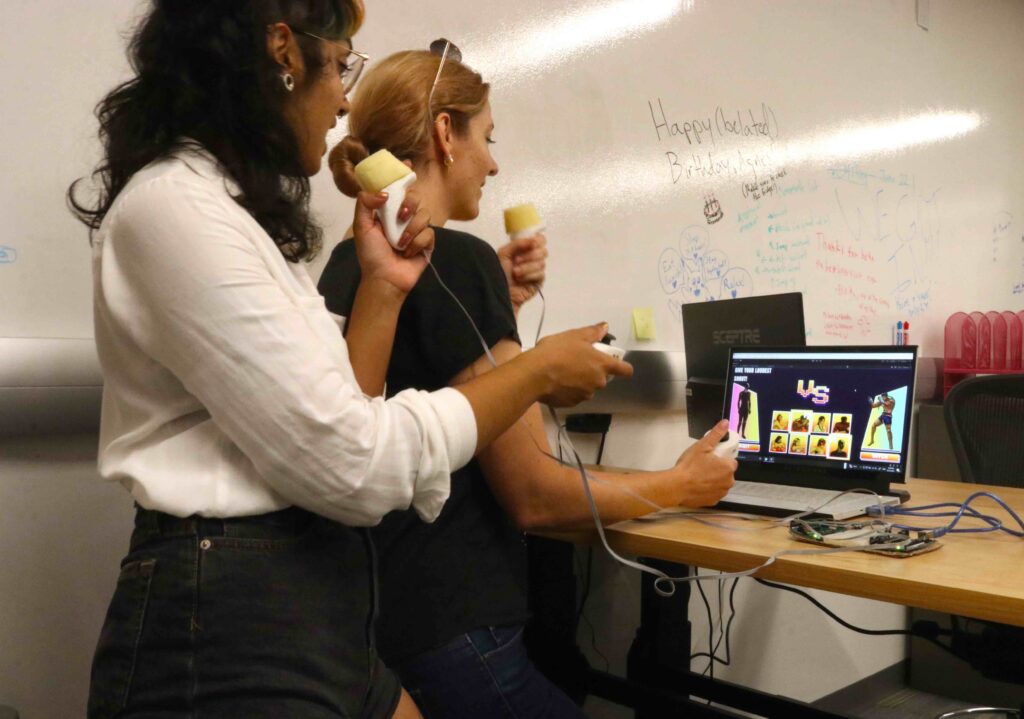
Design suggestions & learnings
Integrate background noise into gameplay
Leverage spectator noise and integrate into core game mechanics instead of adopting background noise filtering.
Personalize voice command capability
Extending game controls with preset and/or personalized voice commands. Allow predefined control phrases or unique commands unique to respective competitive or private environments.
Enable guardrails for volume & aggression
Implementing tutorials to educate on healthy play volume, tone and content. Also, including vocal warm-ups before starting games to help avoid injury.
Future direction
The focus group session provided invaluable insight and validated planned concepts.
- Safety and Physicality of Embodied Play
Accounting for the limitations of the body and looking to safe practices for physical health and well-being. - Novel Play Informed by Familiar Tradition
Giving players better literacy to explore novel play through a familiar framework e.g., fighting game culture. - Transformative Impact from Embodied Contexts
Considering how embodied play reacts to and influences the sociocultural elements in gaming settings e.g., fighting game tournaments.
